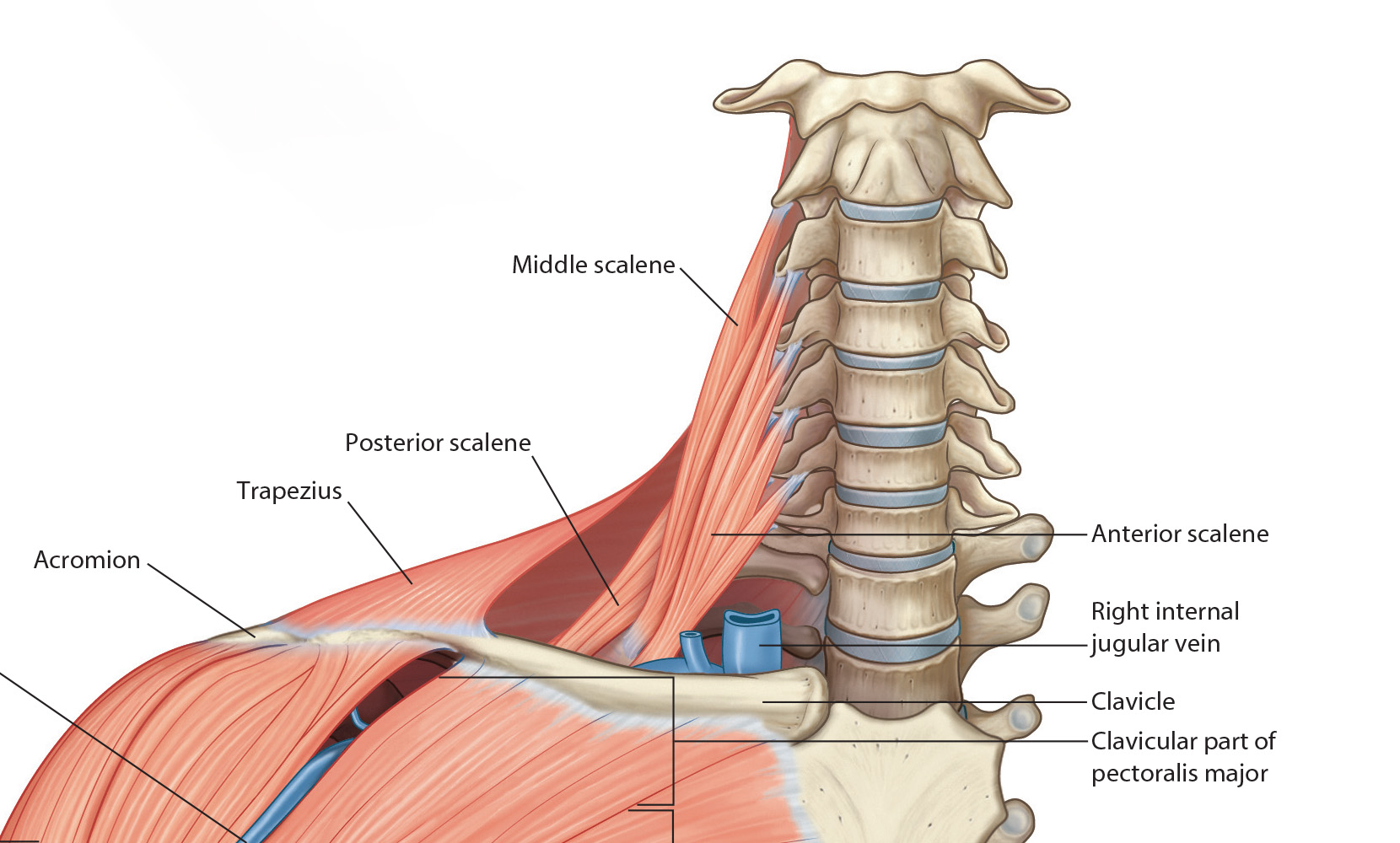
Lab 1 Module 3: Posterior Triangle of the Neck - Page 1 of 5
READINGS:Gray's Anatomy for Students (Fourth Edition): Pages: 1012-1019 |
The neck is divided into a number of triangles for the purposes of description. The two main triangles are the Anterior Triangle and the Posterior Triangle. Each of these two triangles can be broken down into smaller sub-triangles. We will discuss the specifics of those triangles during the GI theme. At this time we are only concerned with the Posterior Triangle.
 |
| Tap on image to enlarge |
|
Origin - manubrium of the sternum and medial 1/3 of the clavicle. Insertion - mastoid process of the temporal bone (and a small part of the occipital bone). Innervation - Spinal Accessory Nerve (Cranial Nerve XI). Action - Unilaterally causes the contralateral rotation of the face and ipsilateral neck side bending. When acting bilaterally they help flex the neck. |
| Add the Posterior Scalene. |
|
Origin - Posterior tubercles of transverse processes of C5-C7 vertebrae. Insertion - external border of the second rib. Innervation - ventral rami of cervical nerves C7 and C8. Action - flexes the neck laterally; elevates the second rib during forced inspiration. |
| Add the Middle Scalene. |
|
Origin - Posterior tubercles of transverse processes of C5-C7 vertebrae. Insertion - superior surface of the first rib’ posterior to the groove for subclavian artery. Innervation - ventral rami of cervical spinal nerves. Action - flexes the neck laterally; elevates the first rib during forced inspiration. |
| Add the Anterior Scalene. |
|
Origin - Transverse processes of C3-C6 Insertion - 1st Rib Innervation - cervical spinal nerves C4-C6 Action - Flex the head. |